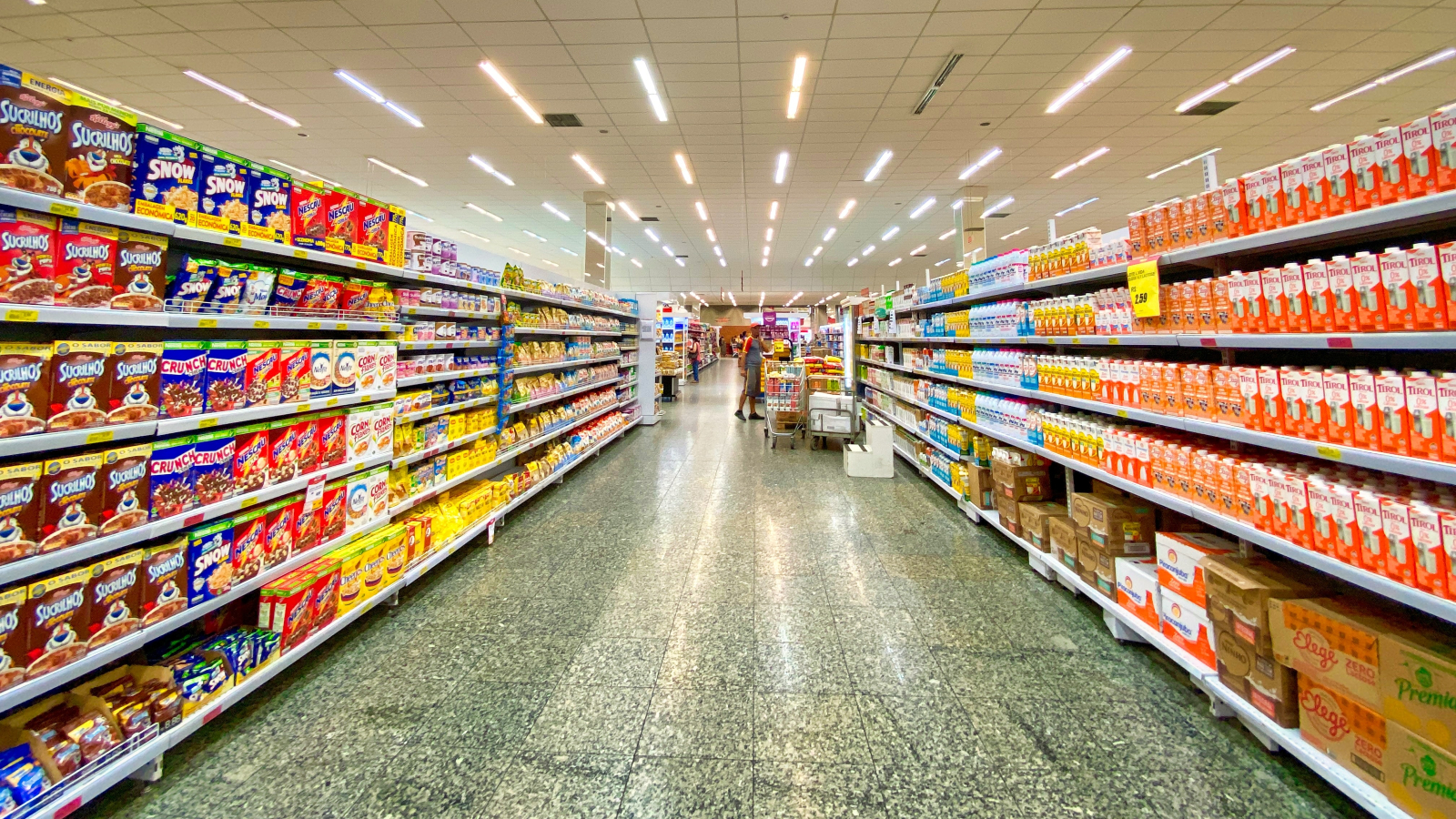The Pros and Cons of the Endless Aisle
Is there anything more frustrating than schlepping all the way to a store in search of something, only to arrive and find it’s not in stock?
The time wasted on the journey there and back. The exasperation of fruitlessly searching the shelves for the air fryer you just know will make your kitchen complete. The uncomfortable conversation with the retail worker trying (and failing) to let you down gently. It’s all enough to make one give up on the in-store experience altogether.

This is a problem the endless aisle aims to solve
Opening an endless aisle can give customers the chance to browse a much wider range of products than may actually be present at a store, typically by using a tablet or other touchscreen device. An item could be out of stock or sold in a different location, and the endless aisle lets a customer have it shipped to their home or a store.
The British retailer Argos stopped printing its signature catalogs last year in favor of a touch screen catalog, providing customers one version of an endless aisle experience, while global fashion retailer Gant uses the concept to account for differences in taste around the world. Gant stocks items in the locations where they are most popular, and then offers them for delivery elsewhere via the endless aisle.
However, opening an endless aisle isn’t as simple as installing a touchscreen kiosk or putting your eCommerce website on an in-store tablet. Retailers need to consider the fulfillment, stocking, and training challenges when going endless, as well as the benefits.
Let’s take a look at the pros and cons of the endless aisle as well as some top tips from the experts at Ultra Commerce to see if it’s right for your business.
Critical Decisions
Before we dive into the pros and cons, a pair of experts from Ultra Commerce are here to explain the key decisions you have to make before embarking on your endless aisle odyssey.
First, the overarching question is whether to open an endless aisle within your network, or to sell products that you don’t hold as inventory within your network, or as some combination of the two, says Dave Crow, Chief Customer Officer at Ultra Commerce.
Dave says you’ve got five critical decisions to make when it comes to execution:
- What ordering options will customers have? Reserve online then pick up and pay in-store? Or buy online, pick up in-store? What about buy online, then ship from store? Or in-store reservation for out-of-stock items to be shipped to a customer’s home or to the store for customer pick-up?
- Who gets sales credit when store inventory is used to fulfill online orders, your store, or website? Dave advises sharing credit and moving on to more important tasks, like satisfying the customer demand.
- How can you source against out-of-stock items on a known, in-transit purchase order?
- What are your in-store stock safety levels and how will endless aisle impact them?
- How do returns work with your endless aisle? Where are they processed, what is done with returned inventory, and how do you reverse sales credit?
Three Pros to Opening an Endless Aisle
1. Increased Sales
This benefit is pretty simple but let’s spell it out anyway: if you have more products available for sale, you can sell more products. The Australian retailer Cue Clothing increased sales by a staggering 130% in the first week of opening an endless aisle, according to Shippit, with “uncapped inventory access” a key driver of sales.
The endless aisle mainly achieves this benefit by reducing the number of lost sales you’ll suffer through items being out of stock, something which cost US retailers $634.1 billion in 2014, according to CNBC. Endless aisle also helps boost sales by ensuring a customer’s first interaction with your brand is positive and their need is fulfilled.
2. Maximize Store Real Estate
Rent is probably one of your highest fixed costs, so why not get the most out of your physical space? By using the endless aisle to give each store access to more products, you can boost the performance of smaller locations. For example, US retailer Target’s normal stores weigh in at a whopping 116,000 square feet, whereas a TargetExpress can be housed in just 20,000 square feet, according to Marxent.
Aside from saving on rent, maximizing real estate space is part and parcel of a winning omnichannel strategy. In addition, cutting down the amount of space you have to display and stock products should incentivize you to curate them more effectively.
3. Improved Customer Experience
You want every customer to walk away from a visit to your store satisfied, and the endless aisle helps you ensure this happens. For one thing, you won’t have to turn anyone away because the item they want isn’t available. If what they want isn’t on-site, they could test out a similar product that is available, and then have the option to order what they want to their home or the store.
In addition, providing a kiosk or touchscreen for the customer to browse products by themselves allows them to interact more closely with your brand and for many people, it’s just downright fun.
“The touchscreen kiosk grabs customer attention immediately; most customers think it’s really cool. The shoppers who have been coming to us year after year are especially impressed by the interactive experience,” Mike Kordik, co-owner of Mike’s Furniture, told Elo Touch.
Three Cons to Opening an Endless Aisle
1. The Paradox of Choice
Ever stood in a supermarket’s cheese section and felt overwhelmed by the sheer number of options available? Did you have to choose between an overwhelming array of cheddar, gouda, feta, low-fat, string, and myriad other dairy products? If so, you’ve faced the paradox of choice. The term was made famous by American psychologist Barry Schwartz in his book “The Paradox of Choice – Why More Is Less”.
Schwartz cites one study in which researchers offered samples of jam and a discount coupon for a future jam purchase to customers in a gourmet food store. They found that when 24 varieties of jam were offered as samples, 3% of customers actually bought a jar, whereas when only six were displayed, 30% ended up purchasing one.
To avoid falling into this paradox, Matt Boland, Global Director of Partner Development at Ultra Commerce, says you should “stay focused on the natural extension of your products.”
“If you sell dresses, offer accessories, not tires, or if you sell watches, offer bands and battery replacement services, not running shoes,” as a bit of an extreme example, he states, but you get the picture.
“It’s fine to try to be everything to everyone, but it’s better to be something (the expert) to someone (your customer),” he advises.
Other top tips from Ultra Commerce include offering an endless aisle for high-moving, in-demand products where minimum stock is held in each physical store and giving your customers a variety of efficient (and transparent) options to choose from when it comes to transactions and fulfillment.
2. Stock Data
To make the endless aisle work, you’ll need detailed, accurate, and real-time information about the exact location and availability of your entire inventory. This becomes even more important if you’re pursuing an omnichannel strategy as you’ll need this information across every channel you sell on.
Dave Crow at Ultra Commerce advises reviewing your current applications infrastructure before opening an endless aisle to ensure you don’t try and force your tech into performing unnatural acts. But how can you find out what’s unnatural for your tech stack? Dave says the simple answer is asking if opening an endless aisle will require customization and development.
In addition, you’re going to need an order management system (OMS) that can track inventory at the physical location level, with frequent updates (two to four times or more per day) and the capability to integrate with all sales channels.
“OMS is the single most important investment you can make when considering an endless aisle initiative. In my honest opinion, an endless aisle cannot work without an OMS – and it must be one that can handle multi-location inventory and complex order orchestration,” says Dave.
3. Fulfilment Challenges
Taking the decision to open an endless aisle could put pressure on the fulfillment end of your business. If you’ve decided to do it by utilizing drop shipping, you’re relying on your suppliers to ensure the customer has a positive experience, which is less than ideal depending on your supplier’s priorities. Or if you’re going to take on all the fulfillment responsibilities in-house, the complexity of your operation will increase and you’ll tie up some capital.
If you’ve invested in a solid OMS, Matt at Ultra Commerce advises putting fulfillment on “auto-pilot”.
“Any OMS worth the investment you make allows the deconstruction of the order to the individual line, in Retail and B2B, to provide a promise (ATP) to the line level, execute at the line level (direct or cross-dock), and reorchestrate the order as a single customer transaction,” Matt says.
In addition, clear training and documented processes have to be provided to any employee who may have to pick, pack, and ship (or place on hold) products.
“For example, store associates may need instruction on where to find shipping materials, print labels, and schedule pickup for orders shipped from store,” Matt says.
Aisle be There for You
Unlike with jeans, there’s one-size-fits all approach to opening an endless aisle.
Whether it works for your business or not will depend on several factors, and of course one of the key parameters is your technological capabilities.
Get in touch with SmartOSC now to find out how we can help with your eCommerce needs, and check out our strategic partner Ultra Commerce for more expert advice on endless aisles and all things eCommerce.


